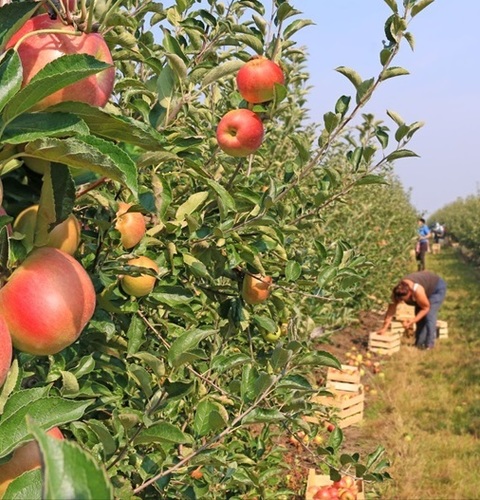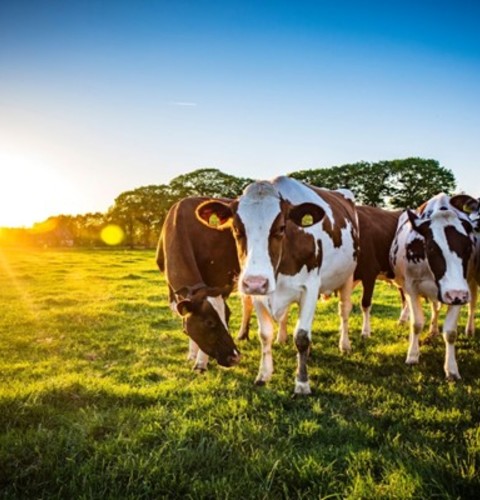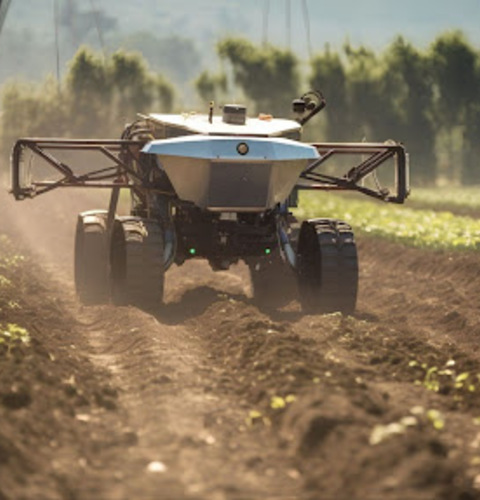Agriculture has been central to human society from the very beginning, and we have made tremendous technological progress to enhance it to meet global needs. We have achieved levels of production that make it possible to provide enough food for the entire population of over 7 billion people.
However, every era comes with its own set of needs, and our response to the present needs of the world will very well determine whether or not a future exists. Climate change has progressed to a state of crisis and without conscious actions on our part, Earth will continue to accelerate towards irreplaceable destruction.
Need for Sustainable Agriculture
Climate activists have been trying to draw global attention towards climate change for over two decades, but it wasn’t until recently that the world truly started paying attention. But what does the climate crisis have to do with agriculture? The short answer: everything.
Agriculture and related industries accounted for $1.109 trillion of the USA GDP in 2019, making it a sizeable market. The agriculture industry also accounted for 10% of GHG emissions in the US in 2019 and 25% globally.
Changing our agricultural techniques and practices to create space for sustainable agriculture can help us reduce the harmful effects of erosion, deforestation, soil contamination, etc. This will help us extensively cut back on our carbon emissions, improve restoration, and slow down environmental deterioration.
What Is Regenerative Agriculture?
Regenerative agriculture refers to the adoption of sustainable farming and grazing practices that can help reverse climate change. It involves increasing biodiversity, moving away from factory farming, rebuilding organic soil matter, and improving water cycles.
The main goal is to reduce greenhouse gas emissions and use processes that would pull the carbon from the atmosphere into the soil to enhance plant growth and production.
How Does It Work?
The core methodology of regenerative agriculture lies in the principle. Regenerative agriculture focuses on maximizing the utility of resources available and reusing them to balance out the net usage. It moves away from resource depletion by deploying organic recycling rather than employing artificial fertilization.
Following are some of the most commonly used regenerative agricultural techniques that are helping us make a difference:
1. Enhancing Soil Fertility
In a more natural setting, plants and crops have seasonal cycles. Some fruits and vegetables grow better in summer conditions while others flourish in winter and need relevant nutrients to facilitate their growth. However, leaving the ground unattended for an entire season would make the relevant nutrients dry up and growing plants off-season will require artificial fertilizers.
The key is to use plots of land for growing crops that are in season. This measure would help keep the soil nutrients fresh for each type of crop, and both can be sustainably grown in their respective cycles organically.
Regenerative agriculture practices also enhance the soil by reusing organic waste of harvested plants to return leftover nutrients to the land.
2. Cutting Down on Tillage
Tillage is a commonly used agricultural practice to prepare the land for sowing. However, research has proven that tillage is detrimental to the environment in several ways.
a. It disrupts the natural formation and fungal communities in the soil that leads to extensive soil erosion.
b. It adds excess oxygen into the ground and releases carbon dioxide that the soil needs to fully process the nutrients when growing a crop.
c. It leads to soil capping and slaking that accounts for extensive loss of water and soil, depleting perfectly usable resources.
Minimizing or not using tillage is helpful for the soil and helps it keep its natural state intact. Natural fungal growth and soil formations have played an important role in maintaining soil health and fertility, and this practice will remove erosion and increase carbon sequestration.
3. Increasing Biodiversity
The original fertility was a result of the extensive diversity of flora on land. Each land was home to various plants, crops, and deposits that helped add a diverse set of nutrients to the land that could create a sustainable system of farming.
Biodiversity also mixes complementary bacteria and fungi into the soil that further improves soil health. It also provides the land with resources that multiply over time through natural regeneration.
4. Strategically Planned Grazing Routes
Another part of regenerative agriculture is the removal of factory farms and the return to the traditional system of cattle grazing. Adopting the older system helps maintain soil health through the natural distribution of bio-waste.
Regenerative agriculture involves studying the land and creating strategic grazing routes for cattle and farm animals to help distribute natural fertilizers in their deposits. Grazing has always allowed farmers to balance the pastures they grow crops on and keep them fertile.
How It Helps Fight Against the Climate Crisis
Each technique mentioned above targets one or more forms of resource depletion, attempts to reverse its harmful effects, and avert the climate crisis.
1. Reduced Usage of Fertilizers
Fertilizers are known for being harmful to the environment due to the number of resources used in their production and transportation. They also disrupt the natural biological balance of soil nutrition and travel to unintended parts of the land and atmosphere where their remnants can be harmful.
By enhancing soil fertility, we can reduce the volume of fertilizers we need to use for crops, thereby reducing environmental pollution caused by them.
2. Revival of Natural Resources
By increasing biodiversity and minimizing tillage, regenerative agriculture has started the process of returning land to its naturally resource-rich status. As the soil regains its nutritional and fungal balance, it will be able to continue multiplying the nutrients and reversing the impact of erosion.
3. Reduction of GHG
Through targeted soil fertilization techniques and by moving away from factory farming, regenerative agriculture has helped cut down on greenhouse gas emissions drastically. GHG are responsible for ozone depletion, global warming, and disruption of chemical balance in the atmosphere.
Final Thoughts
Overall, regenerative agriculture is a positive step towards normalizing sustainable agricultural practices to divert an incoming climate crisis. Soil fertility enhancement, reduction in tillage, and increasing biodiversity are fundamental parts of improving environmental health.
We hope that you found this post informative.
If you haven't already registered or spoken with us, we'd love to hear from you. We are specialist recruiters and executive search consultants within agriculture, food, farming and horticulture. Please visit our website to find out more: www.agriRS.co.uk












